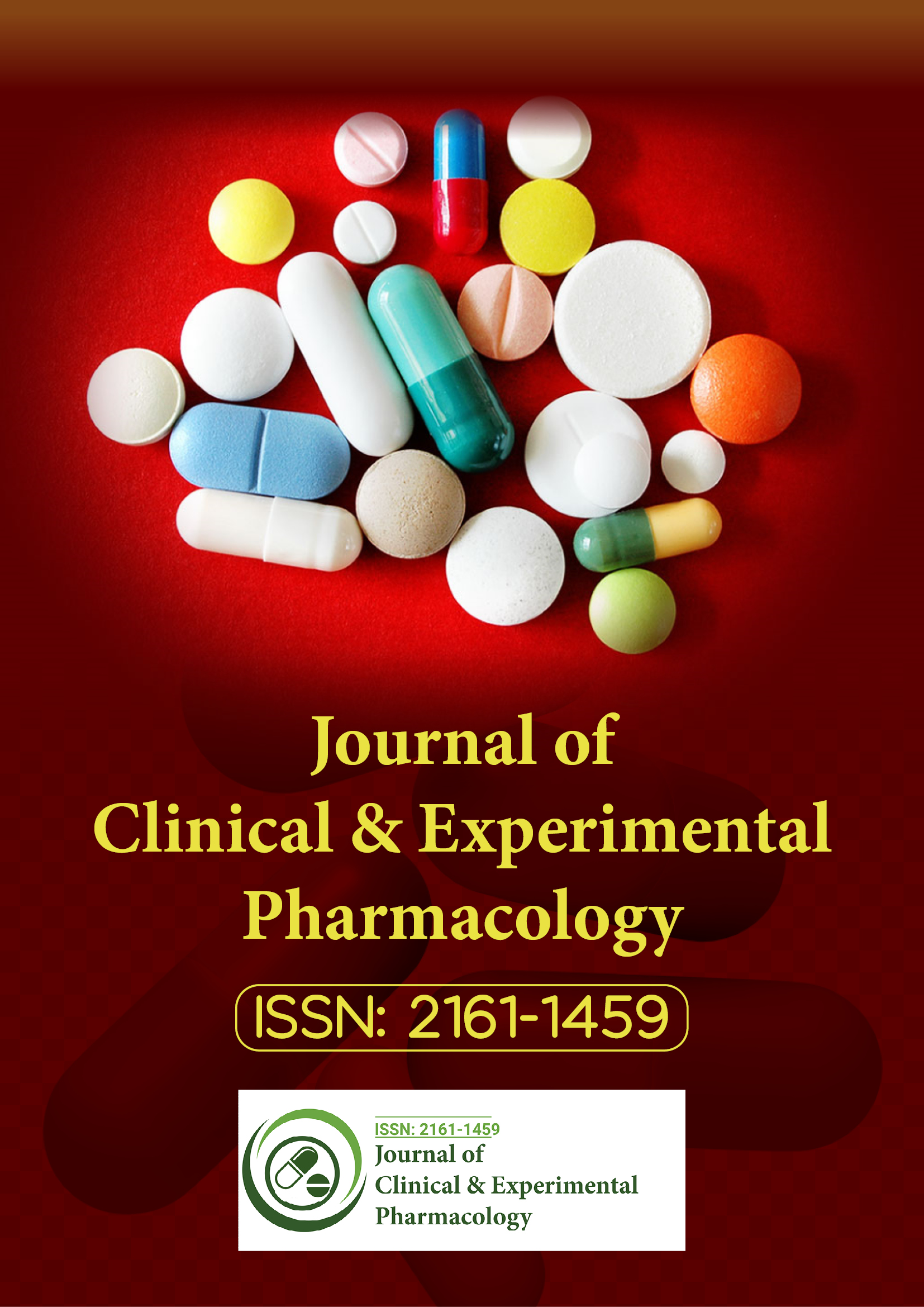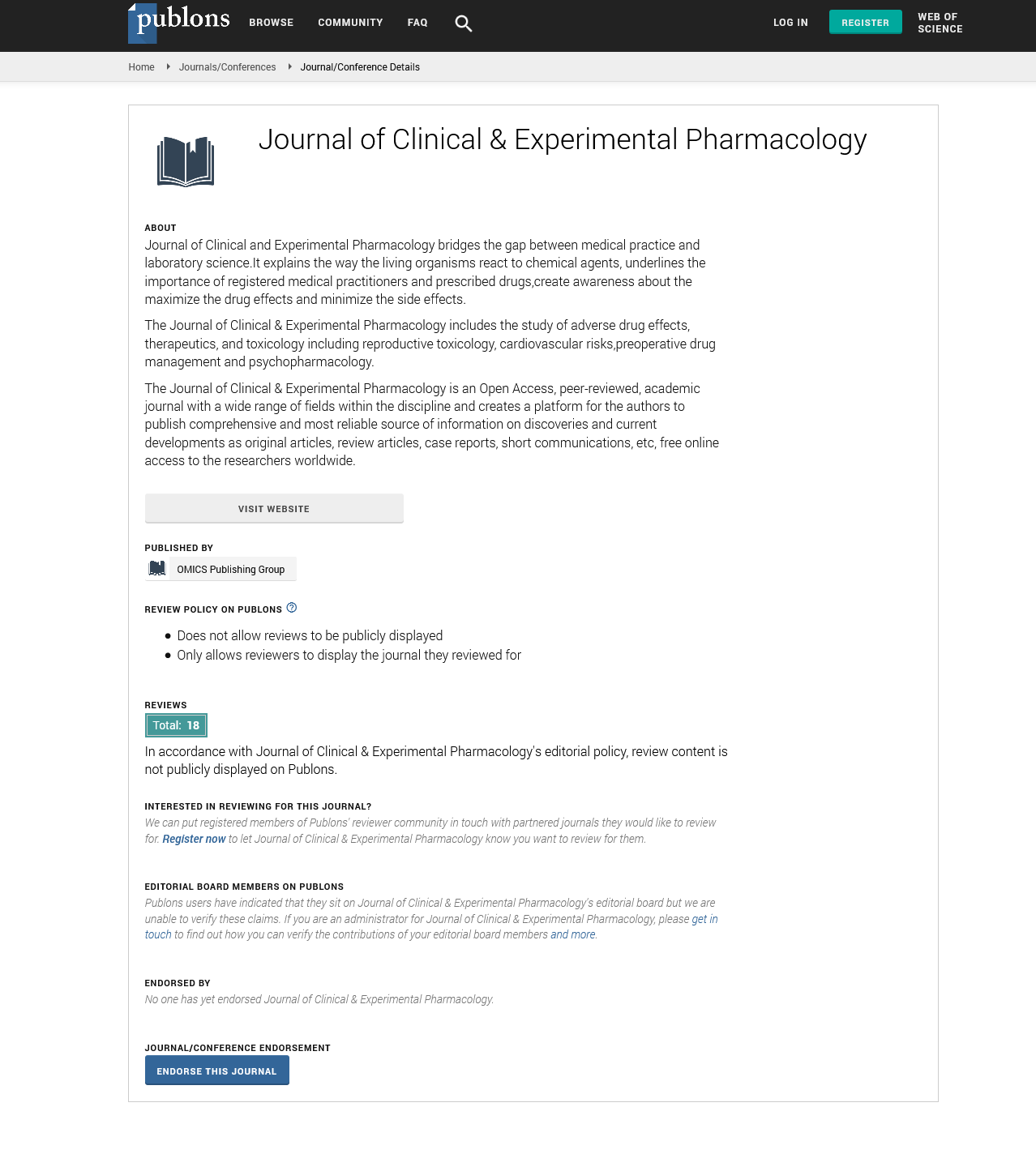Indexed In
- Open J Gate
- Genamics JournalSeek
- China National Knowledge Infrastructure (CNKI)
- Ulrich's Periodicals Directory
- RefSeek
- Hamdard University
- EBSCO A-Z
- OCLC- WorldCat
- Publons
- Google Scholar
Useful Links
Share This Page
Journal Flyer

Open Access Journals
- Agri and Aquaculture
- Biochemistry
- Bioinformatics & Systems Biology
- Business & Management
- Chemistry
- Clinical Sciences
- Engineering
- Food & Nutrition
- General Science
- Genetics & Molecular Biology
- Immunology & Microbiology
- Medical Sciences
- Neuroscience & Psychology
- Nursing & Health Care
- Pharmaceutical Sciences
Identification and characterization of a compound that protects cardiac tissue from hERGrelated, drug-induced arrhythmias
International Conference and Exhibition on Pharmacovigilance & Clinical Trials
October 1-3, 2012 DoubleTree by Hilton Chicago-North Shore, USA
Sabina Kupershmidt, Franck Potet, Amanda N. Lorinc, Sebastien Chaigne, Corey R. Hopkins, Raghav Venkataraman, Craig W. Lindsley, C. David Weaver and Franz J. Baudenbacher
AcceptedAbstracts: Clin Exp Pharmacol
Abstract:
The hERG-encoded K+ current, IKr is essential for repolarization of the cardiac action potential but also a source of cardiotoxicity. Unintended hERG inhibition by diverse pharmaceutical agents can cause the acquired Long QT Syndrome with ventricular arrhythmias and sudden cardiac death. As such, hERG inhibition represents one of the major reasons for adverse drug events and drug withdrawal from the U.S. market. Indeed, the FDA requires testing of all new drugs for hERG-related pro- arrhythmic potential. Using a high-throughput assay, we screened a library of compounds for agents that increase the IC70 of dofetilide, a well-characterized hERG blocker (PubChem AID1511). One compound (VU0405601), with the desired activity was further characterized. In isolated, Langendorff-perfused rabbit hearts, dofetilide-induced arrhythmias were reduced following pre- treatment with 5 μ M VU0405601. In heterologous hERG-HEK cells, dofetilide block of IKr develops gradually, with continuous pulsing. VU0405601 protects hERG from dofetilide inhibition by increasing the IC50 of dofetilide from 38.7 nM in the absence to 76.3 nM in the presence of VU0405601. Investigation of structure activity relationships surrounding VU0405601 revealed three key structural components: a 3-pyridyl amine moiety, an α -amidoether and a 2-substituted naphthyridine structure (substituted with either halogen or methyl) that are important for protection from dofetilide inhibition. Development of a small molecule that could be co-administered to decrease the risk of arrhythmias in response to hERG inhibitors would improve public health and greatly facilitate the drug discovery process.
Biography :
Sabina Kupershmidt completed her Ph.D. in Microbiology and Immunology in 1990 at Vanderbilt University. She remained at Vanderbilt and joined Dr. Dan Roden?s lab in 1993 to apply molecular and biochemical methods to the study and arrhythmia mechanisms and received training in cardiac electrophysiology which has been her field since then. In 2007, she was appointed to Research Associate Professor in Anesthesiology at Vanderbilt. She has published more than 38 peer-reviewed articles and has served on numerous AHA and NIH grant-review committees. She has received funding from the NIH and AHA.

